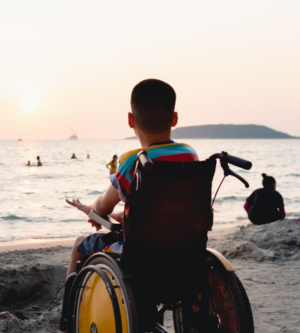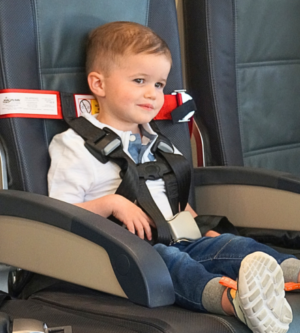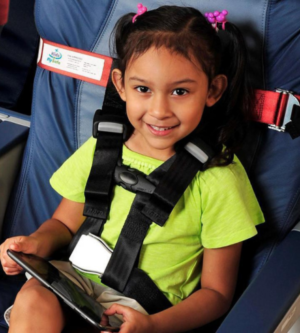
The ONLY FAA Approved Child Aviation Restraint System (CARES)
Are you planning to travel by air with your young child? Do you want to ensure their safety and comfort during the flight? If you are a parent or caregiver traveling with a young child, you know how challenging it can be to keep them safe and comfortable during air travel.
Traditional seat belts are often too large for small children, and car seats are cumbersome to travel with and difficult to install on an airplane. You may consider CARES, the Child Aviation Restraint System designed and manufactured by AmSafe. AmSafe is the global leader in aviation restraint technology and has flown over a billion miles on the world’s airlines. CARES is a device that works with the airplane seat belt to provide extra protection for children between 22 and 44 pounds who can sit in their own seats. It is the first and only harness type aviation child safety device to be certified by the Federal Aviation Administration (FAA). It has been rigorously tested and certified by the FAA, and is approved for use on all major airlines. It is lightweight, easy to install, and fits in your pocket.
We also offer CARES for special needs travelers to make your flying experience more enjoyable and stress-free. We invite you to learn more about the CARES child harness and discover how it can help make your next flight safer and more comfortable for your child. Thank you for considering our product, and we look forward to serving you.
Purchase Genuine Kids Fly Safe CARES Products
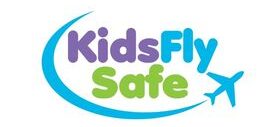
Why CARES ?
Certified by the FAA to keeps kids safe
Easy to install
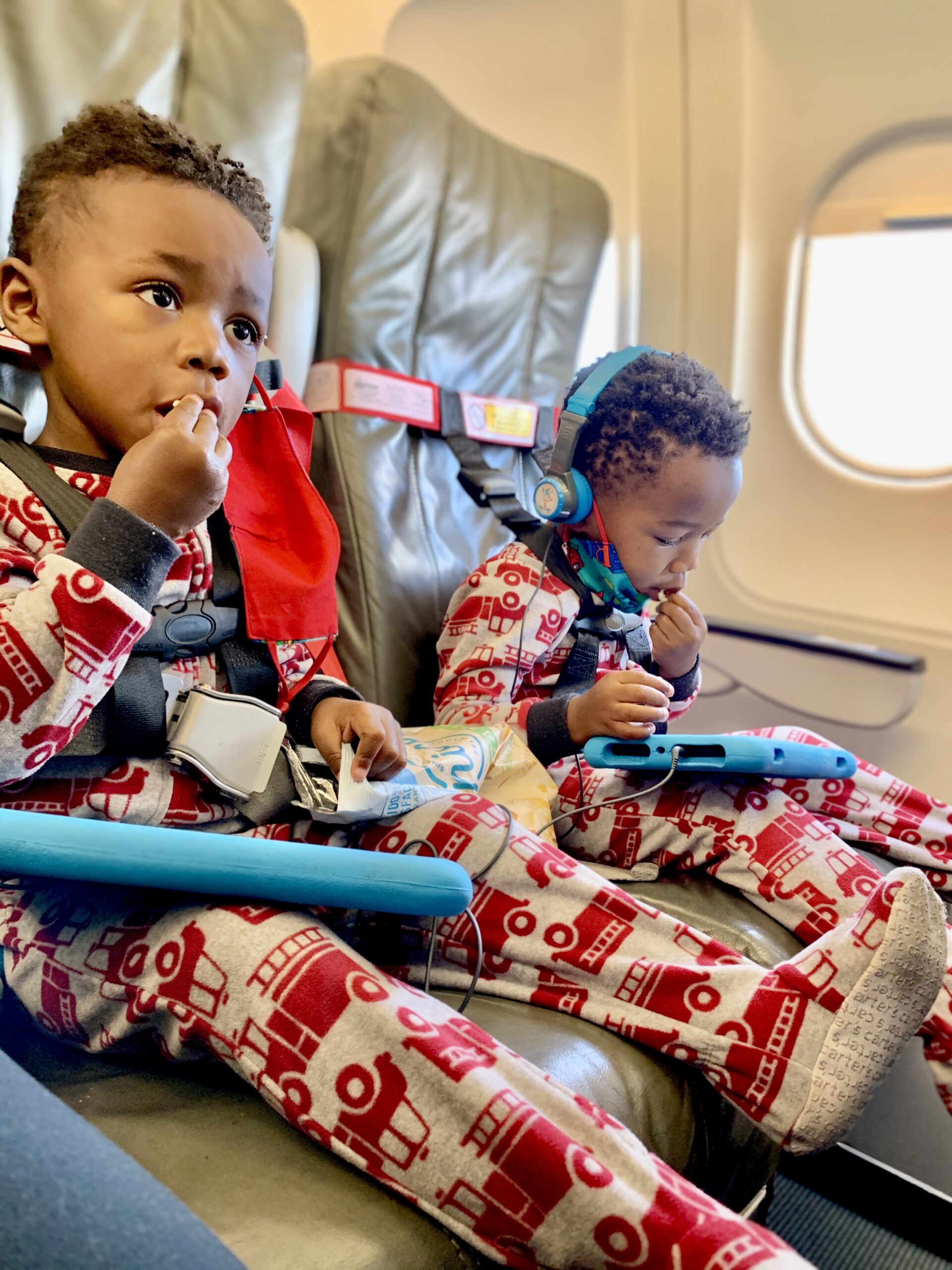
Easy to travel with (especially compared to a car seat)
Inclusive for special needs travelers
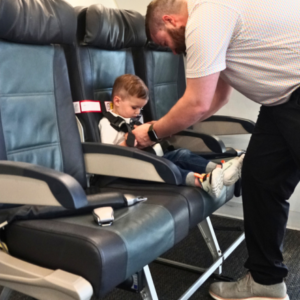
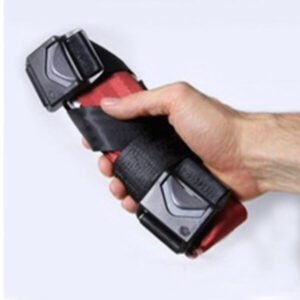
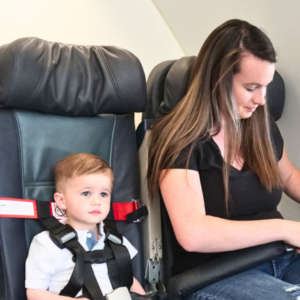

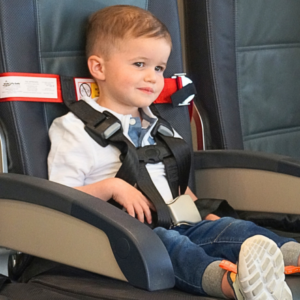
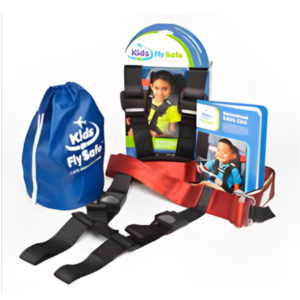

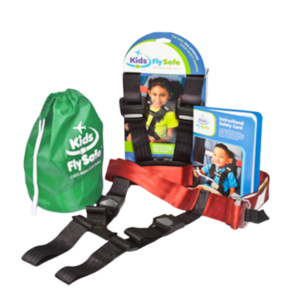
More Information
Can I use CARES in my car?
Can CARES be used during take off and landing?
Yes. CARES is certified by the FAA for all phases of flight: taxiing, take off, turbulence and, landing. Kids Fly Safe joins the FAA in urging all passengers to remain “buckled in” whenever they are in their seats. This applies to children using CARES Safety Harness.
What Countries have certified CARES?
United States – (FAA) Federal Aviation Administration
CARES is FAA approved (to be carried on and installed by passengers) on U.S.-registered Part 23 and Part 25 (commercial and general aviation) aircraft for any of their domestic or international routes. No aircraft operator may prohibit a child from using an approved child restraint system (CRS) when a seat has been purchased for the child. If the approved CRS does not fit in a particular seat, it is the responsibility of the aircraft operator to accommodate the CRS in another seat in the same class of service.
Many countries follow the same or adapt regulations based on the FAA regulations. However, the FAA regulations only apply to those airlines under its jurisdiction, i.e. U.S. based air carriers. In other countries it’s a little different. Regulatory authorities around the world have approved the use of AmSafe CARES restraint. However, CARES is considered “carry-on” equipment (same as car seats) and is not really regulated by aviation authorities. Each airline may set their own rules based on staff training and aircraft type. Most airlines specify that if a parent wishes to use a child restraint system (CRS) they may do so, provided the CRS meets certain standards. Usually standards approved are based on Motor Vehicle safety standards (for car seats) AND/OR standards approved for Aviation use by a regulatory agency such as FAA, TC (Transport Canada) or CAA (UK Civil Aviation Authority). In some cases the airlines specify, by name, which CRS’ are approved for use. We always recommend that travelers check the website or contact the airline regarding the use of a CRS on a particular aircraft.
Air Authorities that have approved the use of CARES:
- Canada (TC) Transport Canada
- United Kingdom (CAA) Civil Aviation Authority
- France (DGAC) Directorate General for Civil Aviation
- Australia (CASA) Civil Aviation Safety Authority
- New Zealand (CAA) Civil Aviation Authority of New Zealand
- Japan (JCAB) Japanese Civil Aviation Bureau
- Oman (DGCAM) Sultanate of Oman, Ministry of Transport & Communications, Civil Aviation Affairs, Directorate General of Civil Aviation and Meteorology
Additionally, EASA has reviewed the CARES restraint system and has deemed that this is an acceptable child restraint device in accordance with JAR-OPS 1.730 and ACJ 1.730. Under JAR-OPS 1.730(a)(3) any CRD that is approved for use in aircraft by the FAA on the basis of a US national standard and is marked accordingly is deemed to be acceptable. In 2008 JAR-OPS was replaced by EU-OPS which approves it based on the same criteria.
Who manufactures CARES?
CARES is manufactured by AmSafe Inc., the foremost manufacturer of airplane seat belts and other aviation safety restraints. (Next time you’re in a plane, turn over the buckle on your own seat belt and chances are it was manufactured by AmSafe.) CARES uses the same industrial-strength materials and is designed to the same engineering standards as all AmSafe safety equipment.
At what age can a child use CARES?
There is no minimum age limit for using CARES.
According to the FAA certification for CARES, the FAA states “The system is for use by children between 22 and 44 lb. (~10-20 kg) in weight, less than 40 inches (~101 cm) tall and who are capable of sitting upright alone in a forward facing position.”
Child restraints are classified by child category and CARES is certified as a Type III restraint for Toddlers. The required labeling is as follows:
THIS TYPE III CHILD RESTRAINT IS DESIGNED FOR USE ONLY BY CHILDREN WHO WEIGH BETWEEN 22 AND 44 LBS {10-20 KG) AND WHOSE HEIGHT IS 40 IN {1OOCM) OR LESS AND WHO ARE CAPABLE OF SITTING UPRIGHT ALONE. DO NOT USE IN A SIDE FACING SEAT. USE ONLY IN A FORWARD FACING SEAT.
Does CARES provide as much protection for my child as a car seat?
Yes. In rigorous dynamic tests conducted by the Federal Aviation Administration (FAA), CARES, restraint was certified as an ELOS – Equivalent Level of Safety –to a car seat. It is the only harness type child safety restraint that the FAA has certified.
Do you have to buy a ticket for a child to use CARES?
Yes. A child must be in his/her own seat to use CARES. Note: Airlines require all children age 2 and older to have their own tickets and to be in their own seats.
Can CARES be used in Business class and First class seats?
CARES fits on virtually all Economy, Business, and First Class seats. The CARES red loop will extend to a circumference of up to 62 inches. If you will be flying on an airline with extra large seats or a sleeper seat, you may want to check with the airline to see if CARES will fit. CARES should not be used on a seat equipped with an airbag.
Why doesn’t CARES have a crotch strap?
CARES does not have a crotch strap. This is because the FAA was concerned that given the particulars of airplane movement the strap itself could cause injury. In their testing the FAA found that if the CARES straps and the lap belt were tightened securely, slipping beneath the belt is not common. With that said, children grow and develop at various rates including the ability to sit upright, unassisted, which is necessary when using CARES. You can determine what’s best for your child.
Sometimes it is helpful to use a thin piece of rubberized mat or sink liner to place underneath their bum. You can also try putting a bolster (or rolled up jacket or towel) under the backs of the legs. This helps bend the knees to help prevent them from slipping down
Can CARES be used on the very last seat of a plane? Will the wall interfere with installation?
Yes, CARES can be installed on seats in front of a bulkhead wall. There is plenty of room position and adjust the red webbing loop around the back of the seat.
What should I do if my child slips down since there is no crotch strap?
CARES does not have a crotch strap because the FAA was concerned that given the particulars of airplane movement the strap itself could cause injury. In their testing the FAA found that if the CARES straps and the lap belt were tightened securely, slipping beneath the belt is not common. With that said, children grow and develop at various rates including the ability to sit upright, unassisted, which is necessary when using CARES. You can determine what’s best for your child.
If the CARES straps and seatbelt are tightened securely and your child still slips down, then it might be helpful to use a thin piece of rubberized mat (like shelf or sink liners) and place that underneath their bum. You can also try putting a bolster (or rolled up jacket or towel) under the backs of the legs. This helps bend the knees which can also help prevent them from slipping down.
Why does CARES have height and weight restrictions?
That’s a good question and one we get fairly often. The reason for the height and weight restrictions is the FAA’s concern that with a heavier traveler strapped to a seat back the seat would tilt forward more quickly in a short stop, causing the person sitting behind the seat not to be able to brace himself.
Airplane seat backs are designed to “give” when pressure is applied with bracing. This is important for the safety of the person sitting behind you. The FAA placed the height and weight restrictions to make sure that all passengers would be covered in the event of an emergency.
Does CARES have an expiration date?
There is no expiration date for CARES. The webbing might need to be replaced if there were tears, cut or worn edges, and/or damaged stitching. However, even if CARES was used every day it would probably take years before you noticed this kind of excessive wear and tear.
What if my child exceeds the weight limit but not the height limit?
This is a very common question since some kids exceed the weight limit for CARES before they exceed the height limit – or vice versa.
According to the FAA certification for CARES, the FAA states “The system is for use by children between 22 and 44 lb. (~10-20 kg) in weight, less than 40 inches (~101 cm) tall and who are capable of sitting upright alone in a forward facing position.”
Child restraints are classified by child category and CARES is certified as a Type III restraint for Toddlers. The required labeling is as follows:
THIS TYPE III CHILD RESTRAINT IS DESIGNED FOR USE ONLY BY CHILDREN WHO WEIGH BETWEEN 22 AND 44 LBS {10-20 KG) AND WHOSE HEIGHT IS 40 IN {1OOCM) OR LESS AND WHO ARE CAPABLE OF SITTING UPRIGHT ALONE. DO NOT USE IN A SIDE FACING SEAT. USE ONLY IN A FORWARD FACING SEAT.
The webbing is the same strength and grade used in all aircraft seatbelts. Even if the CARES restraint would fit and be safe for your child to use, we can’t make any recommendations for its use outside of the FAA certification. The upper limit of the CARES certification is 44 lbs. (20 kg) and 40 in. (100 cm).
How long is the red strap on CARES?
The red loop will extend to a circumference of about 62 inches and fits on virtually all economy, business, and first class seats. It has also been used on some long-haul sleepers found on international routes. We always recommend that you check with the airline and ask about the specific plane you will be flying.
What if my child exceeds the height requirement but not the weight requirement?
This is a very common question since many kids exceed the height limit for CARES before they exceed the weight limit.
According to the FAA certification for CARES, the FAA states “The system is for use by children between 22 and 44 lb. (~10-20 kg) in weight, less than 40 inches (~101 cm) tall and who are capable of sitting upright alone in a forward facing position.”
Child restraints are classified by child category and CARES is certified as a Type III restraint for Toddlers. The required labeling is as follows:
THIS TYPE III CHILD RESTRAINT IS DESIGNED FOR USE ONLY BY CHILDREN WHO WEIGH BETWEEN 22 AND 44 LBS {10-20 KG) AND WHOSE HEIGHT IS 40 IN {1OOCM) OR LESS AND WHO ARE CAPABLE OF SITTING UPRIGHT ALONE. DO NOT USE IN A SIDE FACING SEAT. USE ONLY IN A FORWARD FACING SEAT.
The webbing is the same strength and grade used in all aircraft seatbelts. Even if the CARES restraint would fit and be safe for your child to use, we can’t make any recommendations for its use outside of the FAA certification. The upper limit of the CARES certification is 44 lbs. (20 kg) and 40 in. (100 cm).
How do I clean my CARES harness?
CARES Safety Harness may be cleaned to remove dirt and unwanted oil and grease. This helps the Harness to last longer and prevents corrosion of the metal parts. Hand-wash the webbing with cold fresh water and a mild soap (household dishwasher liquid soap or laundry detergent) You may use a sponge or gently scrub with a soft brush if needed. Dry the Harness in an area that has a good flow of air. Do not dry the Harness in sunlight or near any source of heat.
Clean the hardware with a lint-free cloth moist with isopropyl alcohol. Use caution to avoid contact with the webbing material.
CARES Safety Harness MUST NOT BE MACHINE-WASHED. NO SOAP OR WATER IS TO BE USED ON METAL PARTS.
THE HARNESS MAY BE DRY-CLEANED. HOWEVER, THE WEBBING WILL LOSE ITS ABRASION-RESISTANCE COATING AFTER EACH CLEANING AND ITS SERVICE LIFE WILL THEREFORE BE DECREASED.
Which airlines allow the use of CARES?
If you are flying on a U.S. registered carrier you do not need permission to use CARES restraint. CARES is certified by the FAA for use on all U.S. registered airlines. Occasionally, we come across airline personnel who are not familiar with it so it is helpful to point out the “FAA APPROVED” printed on the label. You may also want to carry a copy of “Child Safety on Airplanes” printed off the FAA website.
Many countries follow the same or adapt regulations based on the FAA regulations. However, the FAA regulations only apply to those airlines under it’s jurisdiction, i.e. U.S. based air carriers. In the U.S., no air carrier is permitted to deny the use of an approved CRS if a parent has purchased a separate seat for the child. In other countries it’s a little different. Regulatory authorities around the world have approved the use of AmSafe CARES restraint. However, CARES is considered “carry-on” equipment (same as car seats) and is not really regulated by aviation authorities. Each airline may set their own rules based on staff training and aircraft type. Most airlines specify that if a parent wishes to use a child restraint system (CRS) they may do so, provided the CRS meets certain standards. Usually standards approved are based on Motor Vehicle safety standards (for car seats) AND/OR standards approved for Aviation use by a regulatory agency such as FAA, TC (Transport Canada) or CAA (UK Civil Aviation Authority). In some cases the airlines specify, by name, which CRS’ are approved for use. We always recommend that travelers check the website or contact the airline regarding the use of a CRS on a particular aircraft.
Can CARES be used for children with special needs?
CARES has been used successfully by many children with special needs. Parents should check with their physician or physical therapist to determine whether CARES provides sufficient upper body support for their child. If your child is under 44 lbs (20 kg) and less than 40 inches (102 cm), no special arrangements with the airline are necessary – just carry the CARES on board and install it as directed.
Does CARES affect the operation of the tray behind the child’s seat?
No. Ensuring that CARES did not adversely affect the functionality of the tray was an important FAA criterion for certifying CARES. The tray is lowered only while the red webbing loop is adjusted around the seat, and then is closed and locked in place, covering up the CARES loop. CARES does not affect the functioning or use of the tray. Using the tray doesn’t affect the safety or functioning of the CARES restraint.
In some older style seats found occasionally on small planes, the tray fits into a plastic cavity with recessed sides. In these the CARES red loop, when pulled taut, could prevent the tray from closing securely. In this case, the CARES loop should be installed around the seat and OVER the stowed tray for taxiing, take off, and landing. (See FAA Advisory Circular 120-87B “Use of Child Restraints on Aircraft”, which can be found in the “In-flight Documents” section of this website http://kidsflysafe.com/instructions/in-flight-documents/)
What if my special needs child is over the 44 lb weight and 40 inch height limitations?
If your special needs child is over the weight/height limitation for which CARES is currently certified, and your child’s medical advisor thinks CARES is an appropriate restraint, you can request an “Exemption” (from current regulations) from the FAA so you can use it. Larger special needs youngsters who are granted this exemption will be seated in the last row of a section of the plane, so no one sits behind the child who might brace against that seat. The FAA exemption will be valid on all US airlines.
To request an exemption follow these steps:
To make your request (which the FAA calls a “Petition for Exemption”), please follow the steps outlined below
- Use the template letter #1 “Request to Use CARES for Larger/Older Persons” below to create your petition in WORD (or other document).
- Complete the items printed in italics inserting the name of your child and other pertinent information where appropriate. Save the document when you are done.
- Go to: http://www.regulations.gov/ and enter “FAA-2007-0001-0001” into the “SEARCH for: Rules, Comments, Adjudications or Supporting documents:” and click “Search”.
- Click the “Comment Now!” button on the right side of the page.
- Fill out the information requested under #1 “ENTER INFORMATION” on the left side of the page.
- Go to #3 “UPLOAD FILES(s) (Optional)”. Click the “Choose File” button and upload the petition you created and saved.
- Click “Submit” (If you need further assistance, you may contact [email protected].)
What if I am challenged by a flight attendant when using CARES?
If U.S. airline personnel are not familiar with CARES, then let them know that the CARES restraint is an FAA certified CRS (child restraint system) and show them the FAA approved label. You may also want to print out and bring the following documents which can be downloaded from the “Documents” section of this page of this website as well as documentation you find on the airlines website:
- FAA website “Child Safety on Airlines”
- Updated FAA Advisory Circular 120-87B “Use of Child Restraint Systems on Aircraft”, issued September 17, 2010
Keep in mind that flight attendants and the airline industry are trained using industry jargon. The industry term for CARES (and car seats) is Child Restraint System (CRS), or Child Restraint Device (CRD). It is always best to use this terminology when referencing your CARES restraint since all other child harnesses are prohibited from use during taxi, takeoff and landing.
CARES is the ONLY FAA approved harness-type restraint. CARES is an “aviation-only” approved child restraint. It is certified with an ELOS (Equivalent Level of Safety) by the FAA. CARES does not meet motor vehicle safety standards and can’t be used in motor vehicles.
With all that said, it is up to the flight crew to attend to the safety of all passengers on board the aircraft. It is best not to argue with them – even if you are correct and you believe they may be misinformed.
Numerous international aviation agencies that have accepted the use of CARES as an acceptable child restraint based on the FAA approval standards. However, outside the U.S., it is up to each air carrier (or airline) to determine which child restraints are acceptable on board their aircraft.
What is the warranty on CARES?
CARES is warranted by AmSafe, Inc., the manufacturer, to strictly conform to the requirements of the Federal Aviation Administration, with respect to child aviation safety restraints, and that it complies with the product specifications provided by AmSafe. AmSafe’s warranties apply for a period of one (1) year with respect to webbing, and three (3) years with respect to hardware, after delivery. Warranty questions should be referred to [email protected] or call Customer Service at 800-299-6249.
What is the timing on shipping orders?
Orders executed after 2PM Eastern Time will ship the next day.
Shipping day commitments do not include weekends, only business days.
Any expedited shipping commitments do not include weekends, only business days.
CARES Child Aviation Restraint System is the only harness-style child safety device approved for aircraft use by the FAA. Here, you’ll find proof of FAA certification, as well as international approval documentation and resources for CARES. You may want to carry the “FAA Website” or appropriate International Certification letter with you when you fly.
Kids Fly Safe Documents
- CARES Instructional Safety Card
- CARES-Harness-diagram
- Kids Fly Safe Fact Sheet
- Common Airplane Safety Myths
- CARES DataSheet
FAA Documents
- CARES-FAA-Certification
- FAA_Advisory-Circular_Child-Restraint-Systems_09-17-2010
- FAA_childsafety_turbulance-happens
- FAA_child-safety-tips
- FAA_Family-Travel_child-safety-e-news
- FAA Circular AC-120-87C-Use-of-Child-Restraint-Systems-on-Aircraft
- FAA Website on Child Safety on Airplanes
FAA Exemption Letter Templates
- Template-Letter-1-–-Request-for-an-Extension-of-a-Previously-Granted-Exemption-to-Use-CARES-for-LargerOlder-Persons
- Template-Letter-2-–-Request-for-an-Extension-of-a-Previously-Granted-Exemption-to-Use-CARES-for-LargerOlder-Persons
International Certifications, Documents, and Resources
- Transport Canada-FAQ about child restraint systems
- Transport Canada (TC) Advisory Circular – Child Restraint Systems
- UK-Civil Aviation Authority -Certification
- Australian-Civil Aviation Safety Authority-Certification
- New-Zealand-Civil Aviation Authority-Certification
- France-Certification
- Singapore-Airlines-Endorsement
- Swiss-IAE
- Finnair-Endorsement
- Japan Civil Aviation Bureau-Certificate-of-Approval-for-Types-of-Components-No-689-dated-Dec-27-2012-Amsafe_CARES
- Sultanate-of-Oman-Endorsement
Resources
- The United States Federal Aviation Administration (FAA) Flying with Children Website
- United States National Highway Traffic Safety Administration (NHTSA)
- SaferCar.gov
- Safe Kids Worldwide Website (A global organization dedicated to preventing injuries in children, the number one killer of kids in the United States.)
Installation Instructions:
- Seat your child in the airplane seat he or she will occupy.
- Lower the tray table behind your child’s seat.
- Slide the RED LOOP of the CARES restraint over the seat back, adjust the height of the RED LOOP so it is just above your child’s shoulders, and tighten it.
- Then close the tray table covering the Red Loop.
- Place the BLACK SHOULDER STRAPS over your child’s shoulders
- Slide the buckle and connecter ends of the regular airplane seat belt through the loops at the bottom of the BLACK SHOULDER STRAPS.
- Buckle the seat belt and pull it snugly across your child’s lap as you normally would do.
- Then buckle the chest clip and snug down the Shoulder Straps.
Your child is now safely buckled for taxiing, take off, landing and whenever during flight the Captain turns on the ‘fasten seat belt’ sign. AmSafe joins the FAA and the airlines in recommending that you keep your seat belt and your child’s CARES fastened at all times when in flight.
Every Child deserves a safe seat
The CARES restraint has been on the market since 2006. CARES child aviation restraint was invented by Louise Stoll, PhD, former Assistant Secretary, US Department of Transportation and grandmother of 9. In her own words, here is the Kids Fly Safe story:
“The idea for CARES was born in the late 90’s when my daughter Miriam visited me in Washington D.C. She stepped off the plane carrying her toddler, a 20 lb car seat, and a diaper bag….and she was 7 months pregnant. I was aghast at the scene and remember saying to my husband, “There has to be a better way!” That night I sketched what I thought a child restraint for airplanes should look like. It had to be lightweight, easy to carry and quick to install and remove from the airplane seat – all the things a car seat isn’t ! Most important, it had to keep the kids securely in place in turbulence and bumpy landings.”
“My husband looked at my drawings and said I should see a patent attorney. I did, and it turned out my idea was patentable. It took 2 ½ years for the patent to be issued. When I learned it was pending, I decided to see if my idea had legs. So I explored several alternative business models and tried to figure out how the Federal Aviation Administration determines what is allowed on planes. I learned that this is no simple matter, so I looked for a partner who understood the aviation world. Eventually I found AmSafe the Phoenix based company that manufactures most of the airplane seatbelts in the world and had years of experience working with the FAA.”
“The General Manager of AmSafe invited me to Phoenix to show him my patent application drawings. He liked what he saw. When my patent was awarded in June, 2002, I licensed it to AmSafe and they built the first prototype of CARES. Four years of developmental testing and regulatory reviews followed. This included crash tests with instrumented dummies, months for the required public notice, time for public response to this new idea for a child restraint, and finally the drafting of new regulatory language that would permit this specific harness-type child restraint on planes. The FAA determined that CARES provided an equivalent level of safety (ELOS) to a car seat for kids traveling in planes.”
In September, 2006 the FAA announced it had certified CARES – the first and only alternative to a car seat permitted on planes. The certification gives parents the right to use CARES on all US airlines for all phases of flight: taxiing, take off, turbulence and landing. FAA regulators made it clear that airlines may not prevent parents from using CARES. The FAA announcement made news – it was picked up by national and international press and launched with a 6 minute segment on the Today show that same morning.
Kids Fly Safe has now sold over 300,000 units. CARES has also been certified by Canada, Australia, New Zealand, and the UK and flies on most of the major airlines of Europe and Asia. Our goal is to ensure that every child flying has a safe seat.
Returns within 30 days of delivery of your unused CARES are accepted for a full refund, excluding shipping. Please include a copy of your packing slip or a note containing your name and order number for refund purposes. Please allow at least 3 business days for the refund to be processed. Send your return to the address below:
Kids Fly Safe Returns
4201 Murray Ave
Lynchburg, VA 24501




